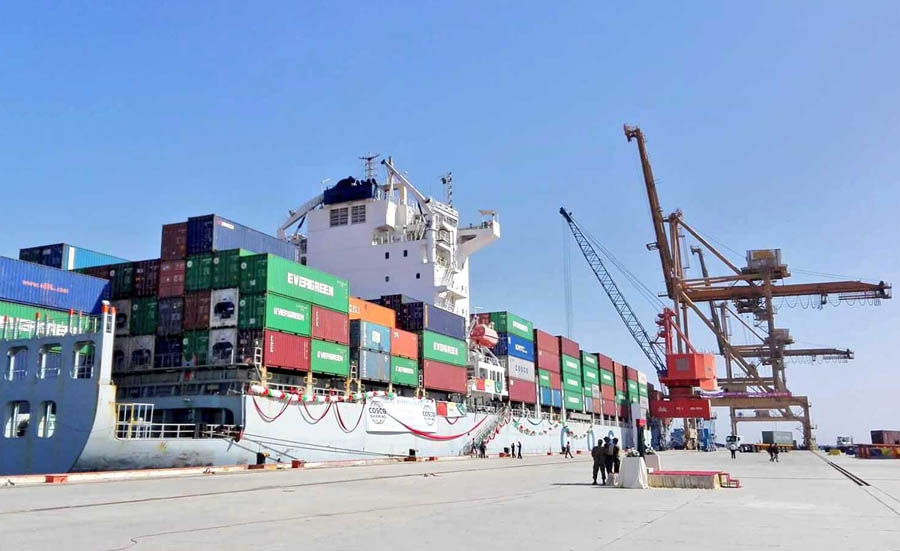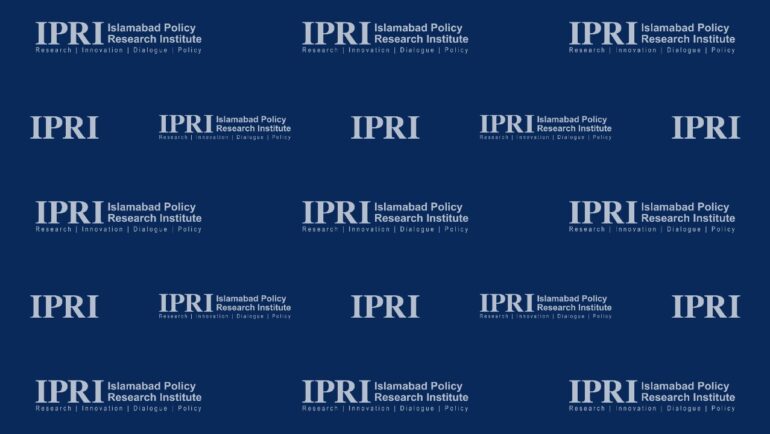Newspaper Article 07/09/2017
ONE of the major factors behind Asia’s economic rise has been its commitment to investment in infrastructure and regional connectivity which has facilitated its international trade and foreign direct investment. In order to maintain this positive trend in the coming decades, countries in Asia need to continue to strengthen regional connectivity and integration, particularly through cross-border infrastructure investment. Greater regional connectivity in Asia would create business opportunities for firms and increase access to markets and jobs for individuals. It would narrow the development gap at national and sub-regional levels, thus promoting inclusive and sustainable growth. Better infrastructure would also support market conditions that are conducive to growth by improving competitiveness, productivity as well as environmental sustainability and would therefore support social and economic progress.
Regional connectivity and progress is related to the vision of shared development. This is the philosophy behind the development of China-Pakistan Economic Corridor. Building new transport infrastructure, energy resources and Gwadar Port Projects are its major components. The CPEC is a linchpin of China’s Belt & Road Initiative (BRI). It is often regarded as the link between China’s maritime and overland Silk Road}. It is a unique model of win-win cooperation for Pakistan, China and the region. The CPEC has a great significance for the development of the region in the context of regional connectivity, diverse investment opportunities, industrial cooperation, financial cooperation, agricultural cooperation, tourism, human resource development, people-to-people contact, increase in livelihood opportunities and improve security and stability of the region.
Encouraging progress has been made on the planning and initial execution of several CPEC projects. But there is no room for complacency. The 15-year CPEC plan is being executed in four phases. In first phase by 2018 Early Harvest projects will be completed. In the second phase short term projects would be completed by 2020. In the third phase medium term projects would be completed by 2025. In the fourth phase the long term projects would be finalized by 2030. The four pillars of CPEC include: The Gwadar Port, Energy Projects Transport/Communication Infrastructure and Industrial parks.

Gwadar Port is a gateway of CPEC. It provides trade links with Western China, Central Asia, Persian Gulf, United Arab Emirates, East Africa and North-West India. The fully developed and operationalized port will bring a tremendous change to local areas, including creating 2 million employment opportunities in the coming 8 to 10 years. According to predictions made by the Gwadar Port Development Authority, the next 3 decades will see an influx of a total of 1.7 million economic migrants into Gwadar. About 60 per cent of oil is being imported from Gulf countries that reaches China after covering the distance of 16,000 KMs, and after the completion of Gwadar port project, the distance will reduce to 2500 KMs only which is, from all aspects, more safe and feasible with five times reduction in transport cost.
Gwadar Port is expected to have the capability of handling up to 19 million tons of crude oil per year which will be refined at the port itself and then sent to China through the Gwadar-Kashgar pipeline that is on the drawing board. With Chinese grant Pakistan is constructing a new international airport in Gwadar. As of May 2017, almost 40% construction of the Airport was completed and the rest of the construction is expected to be finished in about two years’ time. The city of Gwadar is further being developed by the construction of a 300MW LNG plant, a desalinization plant, a new 300 bed hospital, and an expressway along Gwadar’s East Bay. These additional projects are estimated to cost $800 million, and are being financed by 0% interest loans extended by the Exim Bank of China to Pakistan. Pakistan and China signed an agreement in January 2016 to finance the feasibility study of Gwadar Port City Master Plan aiming at transforming port city into a regional hub. China is providing US $ 4.1 million for the study to be completed within one year. The study will identify Gwadar’s competitive advantage vis-à-vis other regional ports. It will also suggest strategies to facilitate trade, tourism, community participation, public-private partnership and industrial and economic development at national and regional levels.
CPEC is win-win cooperation not only for Pakistan and China but for whole region. For China, the corridor will expand the number of trade routes between China and other regional counties. Gwadar-Xingjian route can serve as an alternative to the Malacca Straits for the transportation of energy, which will be time and cost effective and will enable China to increase its energy security by reducing reliance on the Malacca route. Further to this, once CPEC is operational, China will find new markets for its products in Central Asia, Africa and the Middle East. It will initiate more economic activities in this less developed north-western province and help China in the execution of its Western Development Strategy (WDS). It will further benefit China in improving the foreign exchange reserve structure, creating investment opportunity for Chinese firms and building new links between Inner land China and Indian Ocean. After completion of CPEC, the distance between China to other regions would substantially decrease. For instance; the distance between Western China and Europe would reduce by 50% resulting in lowering cost of transportation by 50-65% and reducing travel by 50%. The distance between Western China and the Middle East would be reduced by over 80% and cost of transportation would be lowered by over 75% and travel time would reduce by over 85%.
For a state like Pakistan, which faces severe economic and political challenges, the CPEC will provide a big opportunity to stabilize its economy while refining ties with its neighbours and making Gwadar a trade and economic hub of the region. Furthermore, CPEC that includes the construction of roads, railway tracks, energy pipeline routes, and Gwadar‘s international airport, promises Pakistan a novel asset in the form of infrastructure. Additional economic benefits of CPEC will enhance security cooperation between China and Pakistan and overcome problems like terrorism, extremism and separatism. Through CPEC, Pakistan and China would also get an opportunity to augment their naval cooperation in the form of joint exercises, trainings, and counter piracy measures at high seas. This would contribute for the balance of power in the whole region. Moody’s Investors Service has described the project as a “credit positive” for Pakistan.
The corridor will transform the region and act as a catalyst for economic integration by linking south, central and western Asia. Afghanistan being a landlocked country can be a major beneficiary of this project. For it, Islamabad pledged to construct 265 km long Peshawar to Kabul motorway in order to link up Afghanistan with CPEC. This connection will integrate Afghanistan with other regions and also allow her to start commercial activities through Indian Ocean. Furthermore, the western and eastern alignments of the corridor will provide additional connectivity to link Afghanistan and Pakistan through improved roads and motorways.
Due to vital geo-strategic location of Central Asian Republics (CARs) and their richness in oil and natural gas resources with major reservoirs in Uzbekistan, Kazakhstan and Turkmenistan, all regional and international states including Pakistan and China are desirous to get into closer interaction with these states. For CARs, all of the five landlocked countries wish to get access to sea and diversification of energy channel that CPEC project can fulfil. For the export of their natural energy resources, CARs can be facilitated with transit trade and pipeline routes by Pakistan and their goods can be smoothly exported to Middle East and European states via Gwadar Port. If the China-Pakistan railway is completed, Tajikistan could access to the Indian Ocean directly though connecting with it. In this way, the landlocked CARs can greatly benefit from an access route to the world market through CPEC. The revival of Quadrilateral Traffic in Transit Agreement between Pakistan, Kyrgyzstan, China and Kazakhstan has given new impetus to regional connectivity and will help to further tap the potential of CPEC. The Quadrilateral Agreement provides Pakistan with a gateway to Central Asia without passing through Afghanistan and relies on the Karakoram Highway, which connects Pakistan and China, as a transit corridor. It also allows movement of transit goods without levy of any duties in territories of all the contracting parties. President of Tajikistan Emomali Rahmon and the then Prime Minister Nawaz Sharif in their meeting on November 13, 2015 gave in principle approval of different road projects connecting Pakistan and Tajikistan including Gwadar-Peshawar-Kabul-Kunduz-Dushanbe route, Khunjerab-Kalasu-Murghab route and Chitral-Ishkashim-Dushanbe route. Tajikistan’s request for inclusion into the Quadrilateral Traffic in Transit Agreement (QTTA) has been approved. It will become a formal participant once its parliament approves this move. Tajikistan’s trade with Pakistan has risen steadily from $15 million in 2011 to $90 million in 2016 and Tajikistan wants to bring the volume up to $500 million.
At present, the trilateral Pakistan-China-Iran cooperation in the region is improving which is a positive sign for CPEC as it promises huge benefits in inter-regional trade. CPEC can open up trade doors for both Afghanistan and India. The geographical stationing of Pakistan makes it costly for both India and Afghanistan to take up other routes for bilateral trade. The alternate channel for Indo-Afghan transit trade can be carried out through Iranian Chabahar Port; however that land-sea route would not be cost-effective much as compared to the land-based path through Pakistan. Thus due to this geographical compulsion, at present India needs to soften its rigidity in order to abolish long lasting barrier between economic cooperation and to let Afghanistan get the benefits of CPEC. It can safely be concluded that CPEC is not a lynchpin for regional connectivity but would also be beneficial for the prosperity of the people in the whole region. Further, it will develop fresh avenues for cooperation in which regional actors can get the opportunities of capitalizing their economic interests through this mega project. Along with these prospects there are also some challenges as it has also increased the likelihood of clash between the interests of various regional actors manifested in growing Indian strategic partnership with the U.S. Donald Trump’s recently announced South Asian policy has further confirmed this fact that US wants to enhance Indian role in the region especially in Afghanistan. Many believe such policies of US are designed to sabotage the developments relating to CPEC.
Article originally published in Pakistan Observer on August 30, 2017.
Disclaimer: Views expressed are of the writer and are not necessarily reflective of IPRI policy.


2 Comments
by Adeline Witmer
Hi,
Thought you might like this:
http://www.arbissoft.ru/bitrix/rk.php?goto=https2F%2Fprodentim.com%2Ftext.php26shield%3D2412a6hyl5k8lnbbxcnbpoqdf0
Yours in partnership,
Adeline
by Kiya Blaze
Hi
Can I write an article for your website please?
Thank you,